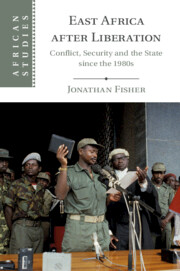Bibliography
Published online by Cambridge University Press: 24 February 2020
- Type
- Chapter
- Information
- East Africa after LiberationConflict, Security and the State since the 1980s, pp. 288 - 310Publisher: Cambridge University PressPrint publication year: 2020



